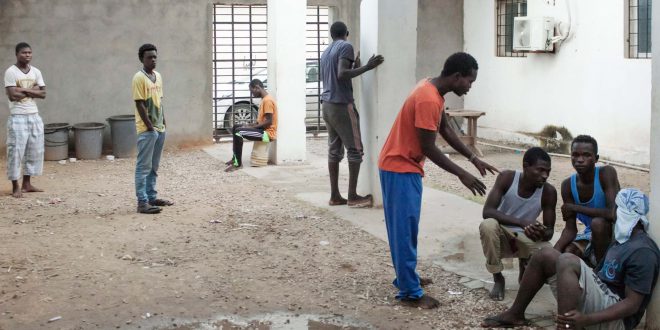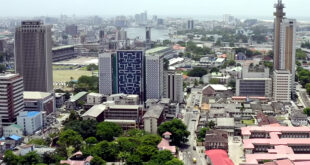Most people that end up in Libya are not seeking to leave for Europe, according to the International Organisation for Migration (IOM).
The Geneva-based organisation carried out over 8,000 interviews with migrants in Libya in 2016 and early 2017.
“What comes out is that 60 per cent of those interviewed had always intended to have as a final destination Libya itself,” Eugenio Ambrosi, IOM’s regional director for the EU, told reporters on Friday (31 March).
The prospect for jobs in the war-torn country remains a lure for many. Others either want to return home or continue onward on their trek.
Anywhere between 700,000 to 1 million migrants are thought to remain in Libya.
The IOM is also running a programme to help those who are stuck in the country to return home. The assistance includes chartering flights, as well as follow-up help once they arrive in their home countries.
Thousands have been helped over the years under the programme, which is set to receive a boost from EU funding.
Earlier this year, the EU announced that it would fund €200 million worth of projects throughout northern Africa, which are geared towards Libya and migration. Around €90 million will end up in Libya itself.
Libya government under fire
But widespread turmoil continues to grip the country, with the UN-backed Libyan Government of National Accord (GNA) in Tripoli struggling to maintain a credible foothold.
Tripoli’s Busetta naval base, seen as the most secure government-controlled area in the capital city, was reportedly stormed by a militia group only last month.
Aside from the militia groups, the GNA is also under fire from the Tobruk-based Libyan parliament, the House of Representatives.
The Libyan supreme court in March scrapped a migrant curbing agreement, which was signed in February between Italy and the GNA. This was due, in part, to the pressure on the deal from the Libyan parliament.
The court ruling directly challenged the authority of Libya’s prime minister, Fayez al-Serraj, to secure such deals, which poses wider questions on his ability to sign off on others in the future.
The plan of the EU is to somehow stabilise the country in an effort to stem the flow of people leaving to reach Italy.
Around 181,000 made the perilous journey last year from Libya, with around 4,500 dying in the attempts.
Another 590 are feared dead out of the 22,000 who have made the same trip since the start of this year.
The EU is training the Libyan coast guard to help rescue people, but those plucked from the sea are sent to a detention centre where they face abuse and possibly even death.
The country has around 31 of such centres, with many run by militia groups and out of any government control.
Around 6,000 migrants are thought to be detained in the centres with some militias demanding ransom payments for their release.
It is unclear how the EU or the GNA intends to wrestle control away from the armed groups, who view the migrants as a valuable commodity.
Nikolaj Nielsen / EUobserver
The original article stated that the IOM conducted 300,000 interviews when in fact it had identified and registered 300,000 migrants in 2016. Of those, they interviewed over 8,000.
 THE AFRICAN COURIER. Reporting Africa and its Diaspora! The African Courier is an international magazine published in Germany to report on Africa and the Diaspora African experience. The first issue of the bimonthly magazine appeared on the newsstands on 15 February 1998. The African Courier is a communication forum for European-African political, economic and cultural exchanges, and a voice for Africa in Europe.
THE AFRICAN COURIER. Reporting Africa and its Diaspora! The African Courier is an international magazine published in Germany to report on Africa and the Diaspora African experience. The first issue of the bimonthly magazine appeared on the newsstands on 15 February 1998. The African Courier is a communication forum for European-African political, economic and cultural exchanges, and a voice for Africa in Europe.

































